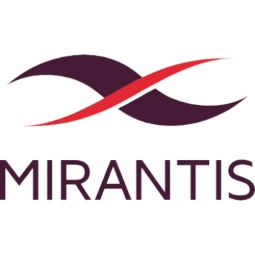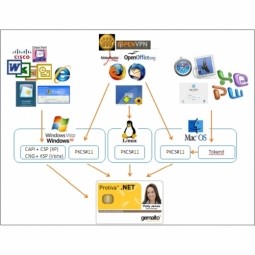Leading Dutch Biodiversity Institute Transforms Scientific Computing, Welcomes Third Party Research Collaboration

Customer Company Size
Mid-size Company
Region
- Europe
Country
- Netherlands
Product
- Mirantis OpenStack
- Ceph storage
- Puppet configuration management
- Intel based servers
Tech Stack
- OpenStack
- Ceph
- Puppet
- Intel
Implementation Scale
- Enterprise-wide Deployment
Impact Metrics
- Productivity Improvements
- Cost Savings
- Digital Expertise
Technology Category
- Infrastructure as a Service (IaaS) - Cloud Computing
- Infrastructure as a Service (IaaS) - Cloud Storage Services
- Application Infrastructure & Middleware - Data Exchange & Integration
Applicable Industries
- Education
- Life Sciences
Applicable Functions
- Product Research & Development
- Quality Assurance
Services
- Cloud Planning, Design & Implementation Services
- Data Science Services
- System Integration
About The Customer
Research experts around the world exploring plant and animal sustainability are now taking note of the scientific resources of the Naturalis Biodiversity Center. The Netherlands based Center recently expanded third party access to its 37 million natural history object catalog to promote species’ wellbeing and the planet’s future. Through collaboration with universities and partner institutes, the government funded Center now has one of the largest collections of data to analyze biological and geological diversity, as well as endangered species and address the threat of extinction. To accelerate groundbreaking research, this information, housed on the Center’s scalable, high performance OpenStack cloud, is now accessible to the scientific community through a published application program interface (API). If they don’t know about it already, every scientist collecting, conserving or studying organisms across the globe should discover the Naturalis Biodiversity Center – the single center of expertise for pooling knowledge on species and evolution.
The Challenge
Over the last few years, the Naturalis Biodiversity Center has expanded to meet the growing needs of the scientific community. To better serve the community, the Center combined previously separate organizations, including a thriving natural history museum, and quickly became a 700-person entity, with 100 resident scientists, 200 guest researchers, and an IT staff of 35 to support these professionals. Additionally, a 30 million Euro grant from the Dutch Economic Structure Enhancement Fund allowed expansion of state-of-the-art laboratories and research collaboration, and the initiation of one of the world’s largest projects for natural history digitization to date. Concurrently, DNA sequencing, 3D, and GIS technologies led to the proliferation of scientists’ data sets. Combined with the trend to analyze relationships between species, the Center required more scalable and powerful compute resources. By the end of 2013, the Center’s IT department had consolidated resources and was ready to address its systems’ constraints to support the next phase of organizational growth.
The Solution
In early 2014, a project team was formed and the members began their search for open source cloud technologies and quickly found the OpenStack technologies and community to be an attractive answer. The team downloaded and installed an OpenStack cloud and were satisfied with its functionality but concerned about maintaining its growth. The team then learned of Mirantis’ strong expertise as a pure-play, vendor agnostic provider of OpenStack distribution and services, and contacted the organization. Using Mirantis’ reference architecture and documentation, the group educated themselves on the technology and built themselves a small working system. Satisfied with the initial system, the team gained additional OpenStack knowledge and expanded the cloud to accommodate multiple workloads – high performance compute for research scientists, storage for the digitized catalog , and web servers for data sharing. The Naturalis IT team used the OpenStack Fuel tool, included in the Mirantis OpenStack distribution, to deploy and manage all components of their cloud, and Puppet for configuration management. With expansion, Intel based systems were moved to commercial data centers in Delft and Amsterdam in a high availability configuration.
Operational Impact
Quantitative Benefit

Case Study missing?
Start adding your own!
Register with your work email and create a new case study profile for your business.
Related Case Studies.

Case Study
Corporate Identity Solution Adds Convenience to Beckman Coulter
Beckman Coulter wanted to implement a single factor solution for physical and remote logical access to corporate network. Bechman Coulter's users were carrying smart card badges for doors, but also needed a one-time password token to access to our corporate network when they were not in the office. They wanted to simplify the process.

Case Study
Revolutionizing Medical Training in India: GSL Smart Lab and the LAP Mentor
The GSL SMART Lab, a collective effort of the GSL College of Medicine and the GSL College of Nursing and Health Science, was facing a challenge in providing superior training to healthcare professionals. As clinical medicine was becoming more focused on patient safety and quality of care, the need for medical simulation to bridge the educational gap between the classroom and the clinical environment was becoming increasingly apparent. Dr. Sandeep Ganni, the director of the GSL SMART Lab, envisioned a world-class surgical and medical training center where physicians and healthcare professionals could learn skills through simulation training. He was looking for different simulators for different specialties to provide both basic and advanced simulation training. For laparoscopic surgery, he was interested in a high fidelity simulator that could provide basic surgical and suturing skills training for international accreditation as well as specific hands-on training in complex laparoscopic procedures for practicing physicians in India.

Case Study
IoT platform Enables Safety Solutions for U.S. School Districts
Designed to alert drivers when schoolchildren are present, especially in low-visibility conditions, school-zone flasher signals are typically updated manually at each school. The switching is based on the school calendar and manually changed when an unexpected early dismissal occurs, as in the case of a weather-event altering the normal schedule. The process to reprogram the flashers requires a significant effort by school district personnel to implement due to the large number of warning flashers installed across an entire school district.

Case Study
Embracing Business Success in Real Time
· Increase control over growing Big Data to improve business decisions · Manage data for 28,000 biotechnology stockkeeping units in the fields of microbiology, molecular biology, animal cell cultures, plant tissue cultures, and lab ware for laboratory chemicals · Accelerate report generation and analysis with real-time data

Case Study
Implementing Robotic Surgery Training Simulator for Enhanced Surgical Proficiency
Fundacio Puigvert, a leading European medical center specializing in Urology, Nephrology, and Andrology, faced a significant challenge in training its surgical residents. The institution recognized the need for a more standardized and comprehensive training curriculum, particularly in the area of robotic surgery. The challenge was underscored by two independent studies showing that less than 5% of residents in Italian and German residency programs could perform major or complex procedures by the end of their residency. The institution sought to establish a virtual reality simulation lab that would include endourological, laparoscopic, and robotic platforms. However, they needed a simulator that could replicate both the hardware and software of the robotic Da Vinci console used in the operating room, without being connected to the actual physical console. They also required a system that could provide both basic and advanced simulation training, and a metrics system to assess the proficiency of the trainees before they performed surgical procedures in the operating theater.

Case Study
Edinburgh Napier University streamlines long-distance learning with Cisco WebEX
• Geographically dispersed campus made in-person meetings costly and inconvenient.• Distance-learning programs in Malaysia, India, and China required dependable, user-friendly online tools to maximize interaction in collaborative workspaces.• Virtual learning environment required a separate sign-in process, resulting in a significant administrative burden for IT staff and limited adoption of collaboration technology.






